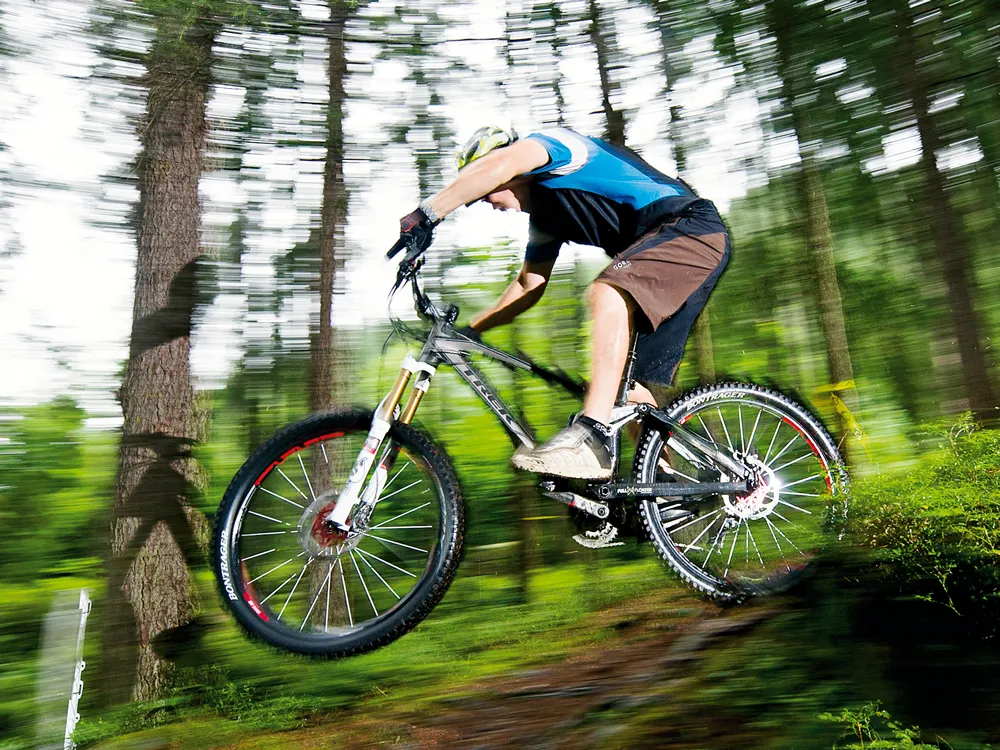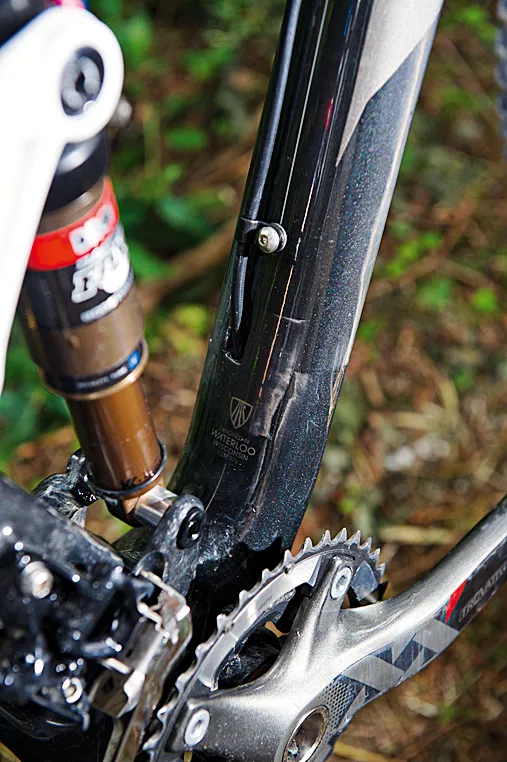Trek’s ABP full-floater suspension platform sits at the heart of their full-suspension range, and with good reason – it works. For the new Remedy they’ve further embraced the potential of ABP by tweaking the geometry and suspension technology. The results are impressive.
Ride & handling: Changes for 2012 underline the Remedy's all-day trail riding capabilities
From the off, the 2012 Remedy feels perfectly balanced, and Trek’s designers have clearly paid attention to component choice. The low-rise, 720mm wide carbon bar begs to be slung through corners and down rocky staircases while oozing control and comfort.
The rear triangle with its 142x12 Maxle feels stiff and quick off the mark, and the DRCV shock and fork successfully soak up small and big hits with equal gusto. We had to drop a few PSI from the recommended settings for each though to fully make use of their plush, chatter-eating potential.
The Bontrager RXL saddle delivers all-day comfort and after six hours of every type of alpine terrain and wet and dry trail conditions, we found it hard to find a fault with the new Bontrager XR4 Team tyres.
Frame: Slimline new shape with adjustable geometry and tweaked suspension
For 2012 the-top-of-the-line Remedy 9.9 gets completely new tube shapes, shedding 100g from last year’s carbon frame and losing a whole degree from its head angle (now 67 degrees). While using heavier duty OCLV carbon than on Trek’s cross-country bikes, the latest Remedy has been slimmed down in looks.
Apparently the aim was to identify its trail – rather than gravity – intentions. You have to look harder to pick out the all-mountain burl, but it’s there in the massive E2 tapered head tube and the top tube/seat tube gusseting. Trek’s rock deflecting Carbon Armour is still standard.
Internal routing swallows the front mech cabling right behind the head tube and the RockShox Reverb seatpost’s hydraulic line disappears into the down tube near the bottom bracket to complement the bike’s neat, no-fuss aesthetic.
At the seatstay/rocker pivot you’ll find a new Mino Link, essentially two small reversible plates that house the pivot bolt. By extracting and rotating them you can change the Remedy’s head angle by 0.5 degrees.
Equipment: Top-end kit plus new DRCV fork to match the rear shock
Our test bike came with just about the best of everything as standard – a splatter of desirable SRAM XX components and Bontrager X Race Lite carbon – pretty much what you’d expect for its pricetag. The 2012 Remedy’s all-mountain credentials are stamped home by the Reverb dropper post and versatile 2x10 drivetrain.
At the heart of the beast’s development is a new DRCV fork that aims to achieve a perfect balance with the RP3 DRCV shock. Like the shock, the new fork contains a secondary expansion chamber within the fork compression rod to increase the volume available to the air spring, making for better big hit control without compromising small bump management.



